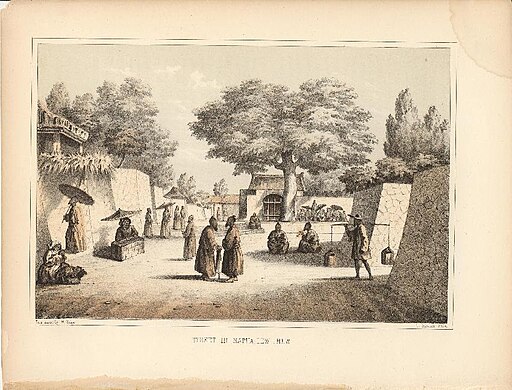“History of the Ryukyu Kingdom and the Integration of Chinese Martial Arts”
The origin of 「空手」(Karate) dates back to the era of the Ryukyu Kingdom, an independent kingdom that existed in what is now Okinawa Prefecture from the 14th to the 19th century. The Ryukyu Kingdom engaged in trade and cultural exchange with various countries such as China, Japan, and Southeast Asia, through which martial arts were also transmitted and integrated.
The martial arts that became the precursor to 空手(Karate or Tudê) were the indigenous Okinawan martial art “テー” (teh)and the Chinese martial art “唐手” (karate or Tudê). *「唐」 is an old Chinese name that can also be read as kara in addition to tou. ”手” means hand. pronounced Te or De. In Okinawan dialect, “唐手” is pronounced “Tudê”
「テー」(teh) was a self-defense method developed by farmers and fishermen in various regions of the Ryukyu Kingdom, while 「唐手」(karate or Tudê) was a form of martial art originating from southern China, characterized by striking techniques such as open-hand strikes and palm strikes.
The fusion of「テー」(teh) and 「唐手」 gave rise to the prototype of modern Karate, known as “手”(te or ti)(In Okinawan dialect, it is often pronounced as “ti”.) in the latter half of the 19th century in Okinawa. 「手」( ti) primarily involved striking techniques using fists and feet.
The name 「空手」”Karate” was adopted in the 1920s, replacing “手”( ti). The character 空'' has the meaning of emptiness in addition tosky”. 「空手」(Karate) translates to “empty hand,” emphasizing its focus on unarmed combat.
Thus, the origin of 「空手」Karate can be traced back to the integration of Chinese martial arts introduced during the era of the Ryukyu Kingdom and the indigenous martial art of Okinawa. 空手(Karate) emerged as a means of self-defense for the people of the Ryukyu Kingdom, closely intertwined with the history of the kingdom.
The Origin of “テー(Teh)”
Regarding the origin of “テー” there are various theories as no definitive records have been left.
Certainly, here is the translation:
- The theory that suggests the independent development of indigenous martial arts in Ryukyu prior to the Ryukyu Kingdom era.
- The theory that posits the independent development of Chinese-origin martial arts in Ryukyu.
- The theory proposing the fusion of Chinese, Ryukyuan, and Southeast Asian martial arts as the source of the development.
The Transmission of “唐手”(Karate or Tudê)
Regarding the transmission of “唐手,” a prominent theory suggests that it was introduced to the Ryukyu Kingdom from the Ming Dynasty of China, during the late 14th to early 15th century, by the Kume 36 families. The Kume 36 families were a group comprising Ming officials, merchants, artisans, and reputed martial artists.
Development of “手” (Ti)
「手」, during the latter half of the 19th century, became a popular martial art in Okinawa. At that time, the Ryukyu Kingdom was under the control of the Satsuma domain, and the practice of martial arts was prohibited. However, because 「手」 was a form of unarmed combat, training was secretly conducted, evading the surveillance of the Satsuma domain.
During the Meiji era, Te was introduced to mainland Japan by Gichin Funakoshi, an instructor at the Okinawa Prefectural Teachers’ College. Funakoshi renamed the art “空手”(Karate) and worked towards its dissemination.
Thus, the origin of 「空手」(Karate) stems from the amalgamation of Chinese martial arts introduced during the era of the Ryukyu Kingdom and the indigenous martial art of Okinawa. 「空手」(Karate) emerged as a means of self-defense for the people of the Ryukyu Kingdom, intricately intertwined with the history of the kingdom.
※Page for Japanese Language Representation 空手の起源




コメント